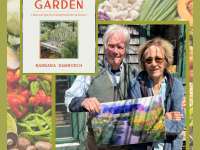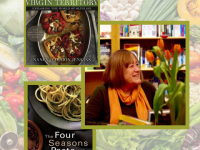The ‘Merry Old Land of Oz’ relocates to Maine
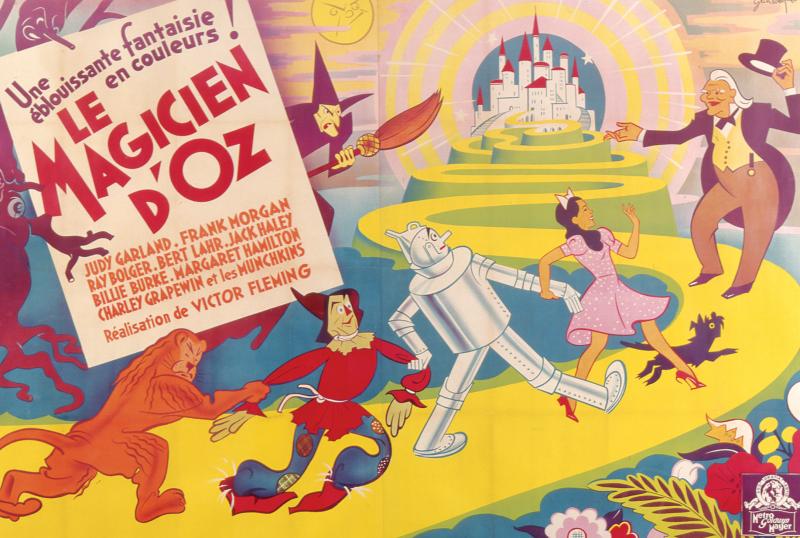 A 65 by 96-inch two-panel billboard for the MGM film by Boris Grinsson. Courtesy of "The Wonderful World of Oz: An Illustrated History of the American Classic" by John Fricke (Down East Books).
A 65 by 96-inch two-panel billboard for the MGM film by Boris Grinsson. Courtesy of "The Wonderful World of Oz: An Illustrated History of the American Classic" by John Fricke (Down East Books).
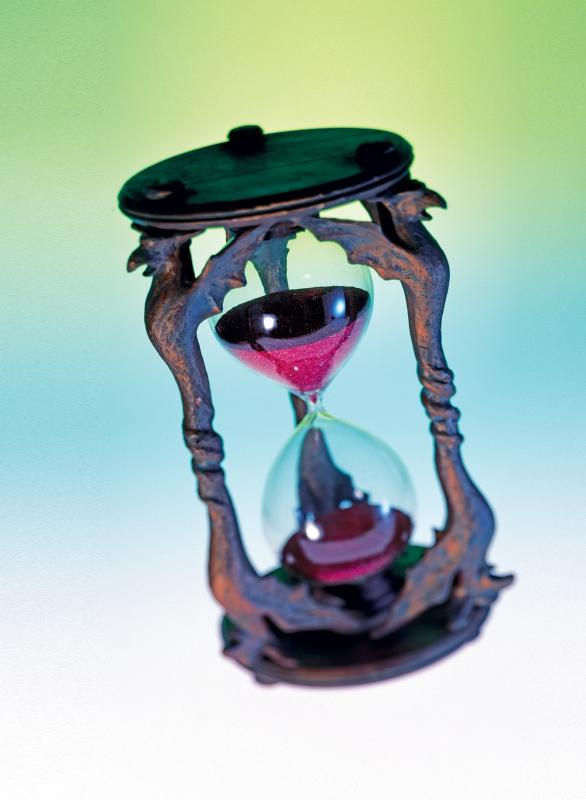 Hourglass prop from MGM’s Oz, 20 inches tall. Courtesy of "The Wonderful World of Oz: An Illustrated History of the American Classic" by John Fricke (Down East Books).
Hourglass prop from MGM’s Oz, 20 inches tall. Courtesy of "The Wonderful World of Oz: An Illustrated History of the American Classic" by John Fricke (Down East Books).
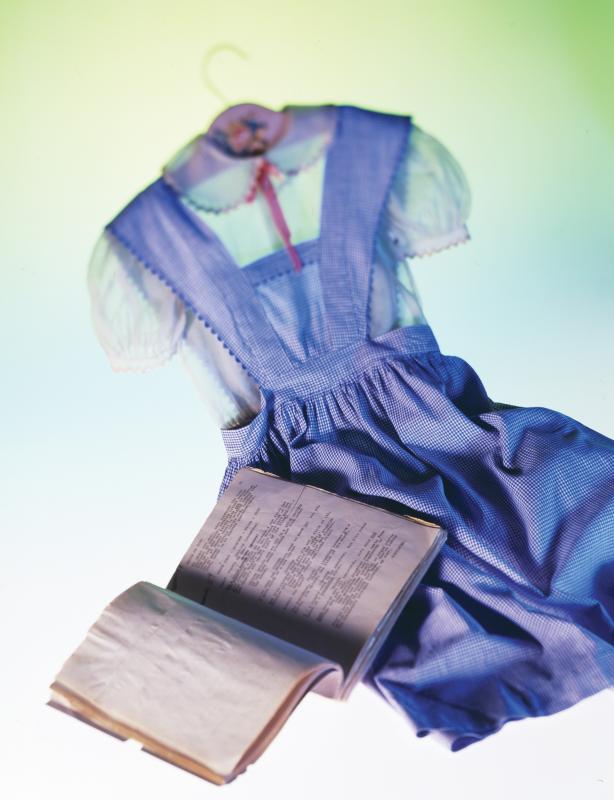 A Gilbert Adrian-designed dress tested by Judy Garland for "The Wizard of Oz" (1939) and the blouse she wore during the first two weeks of filming, together with a shooting script used by Bobby Connolly, who staged the dance numbers. Courtesy of "The Wonderful World of Oz: An Illustrated History of the American Classic" by John Fricke (Down East Books).
A Gilbert Adrian-designed dress tested by Judy Garland for "The Wizard of Oz" (1939) and the blouse she wore during the first two weeks of filming, together with a shooting script used by Bobby Connolly, who staged the dance numbers. Courtesy of "The Wonderful World of Oz: An Illustrated History of the American Classic" by John Fricke (Down East Books).
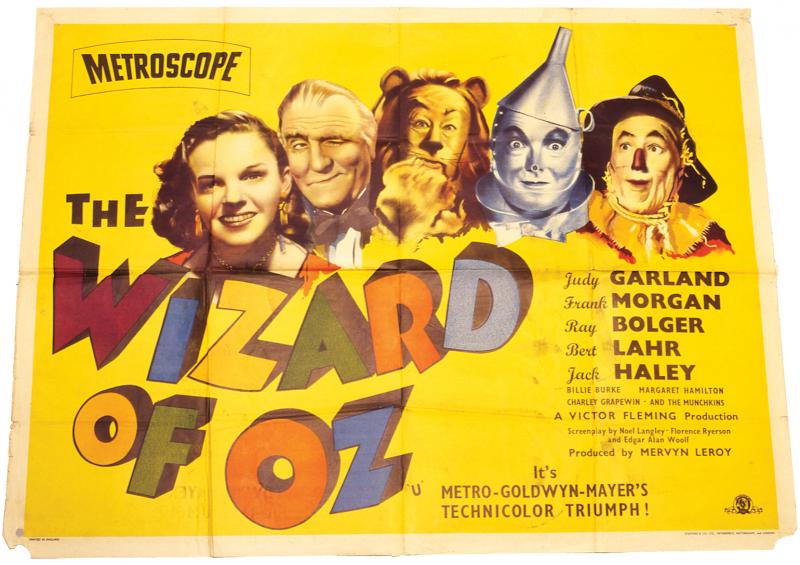 Poster for British reissue of “The Wizard of Oz,” 1955. Courtesy of "The Wonderful World of Oz: An Illustrated History of the American Classic" by John Fricke (Down East Books)
Poster for British reissue of “The Wizard of Oz,” 1955. Courtesy of "The Wonderful World of Oz: An Illustrated History of the American Classic" by John Fricke (Down East Books)
 Rubber flying monkey miniature, displayed in box, made in- house at MGM. Courtesy of "The Wonderful World of Oz: An Illustrated History of the American Classic" by John Fricke (Down East Books).
Rubber flying monkey miniature, displayed in box, made in- house at MGM. Courtesy of "The Wonderful World of Oz: An Illustrated History of the American Classic" by John Fricke (Down East Books).
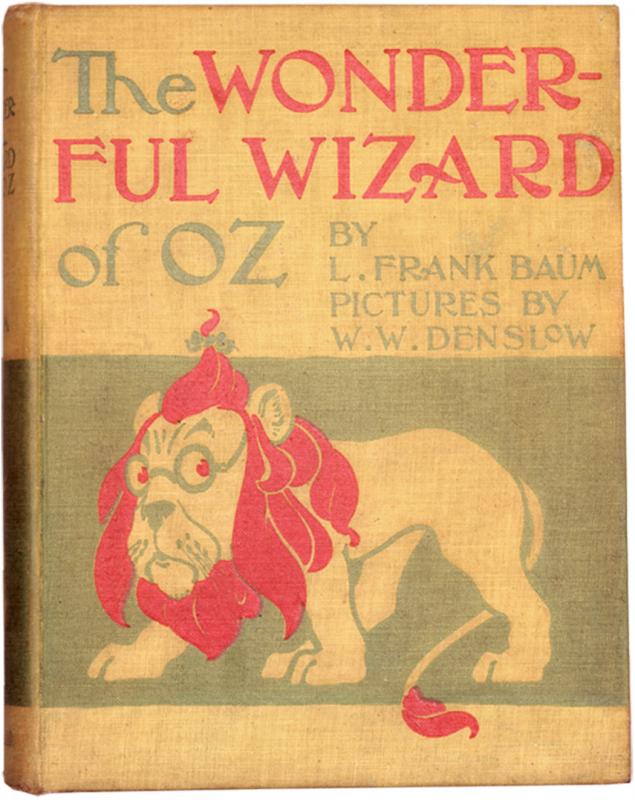 The Wonderful Wizard of Oz, by L. Frank Baum, Illustrated by W. W. Denslow, Chicago, New York: George M. Hill Co., 1900, 1st ed. 8 by 10 inches. Courtesy of "The Wonderful World of Oz: An Illustrated History of the American Classic" by John Fricke (Down East Books).
The Wonderful Wizard of Oz, by L. Frank Baum, Illustrated by W. W. Denslow, Chicago, New York: George M. Hill Co., 1900, 1st ed. 8 by 10 inches. Courtesy of "The Wonderful World of Oz: An Illustrated History of the American Classic" by John Fricke (Down East Books).
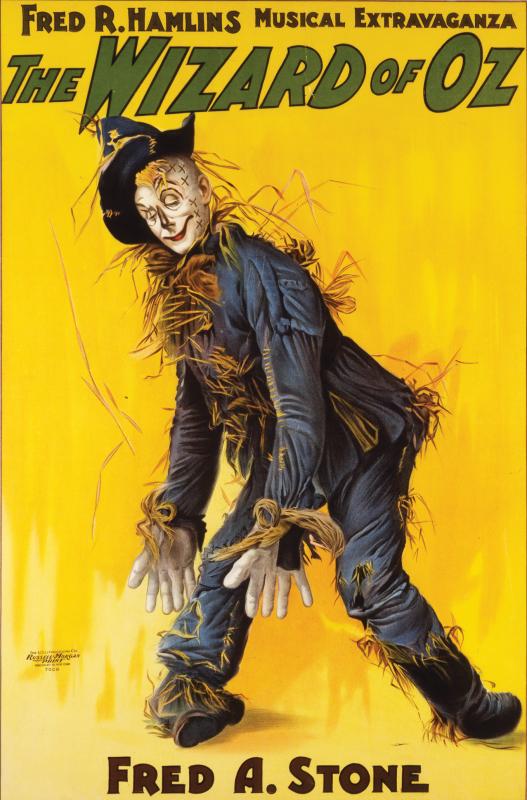 U.S Lithograph Co. Poster, 1902, Lithograph, 30 by 34 inches. Courtesy of "The Wonderful World of Oz: An Illustrated History of the American Classic" by John Fricke (Down East Books).
U.S Lithograph Co. Poster, 1902, Lithograph, 30 by 34 inches. Courtesy of "The Wonderful World of Oz: An Illustrated History of the American Classic" by John Fricke (Down East Books).
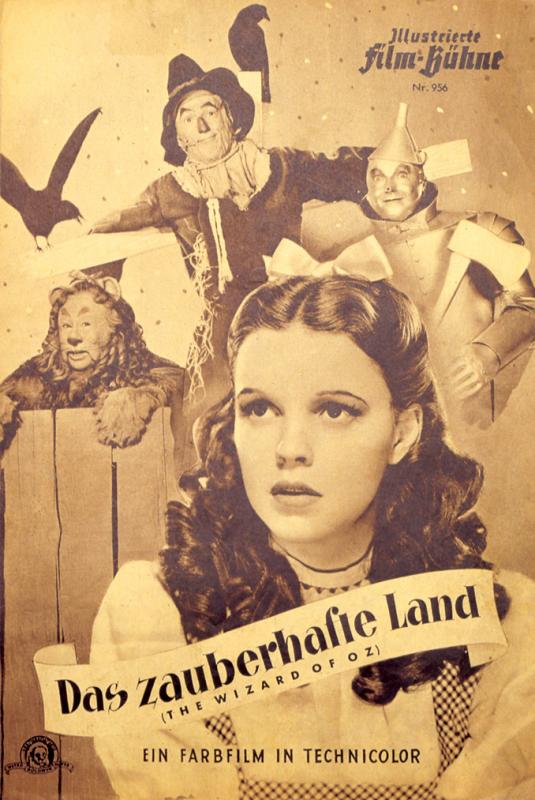 Cover of an illustrated program for Austrian release of Oz, 1940, 7 by 10 inches. Courtesy of "The Wonderful World of Oz: An Illustrated History of the American Classic" by John Fricke (Down East Books)
Cover of an illustrated program for Austrian release of Oz, 1940, 7 by 10 inches. Courtesy of "The Wonderful World of Oz: An Illustrated History of the American Classic" by John Fricke (Down East Books)
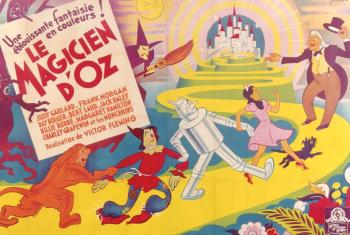 A 65 by 96-inch two-panel billboard for the MGM film by Boris Grinsson. Courtesy of "The Wonderful World of Oz: An Illustrated History of the American Classic" by John Fricke (Down East Books).
A 65 by 96-inch two-panel billboard for the MGM film by Boris Grinsson. Courtesy of "The Wonderful World of Oz: An Illustrated History of the American Classic" by John Fricke (Down East Books).
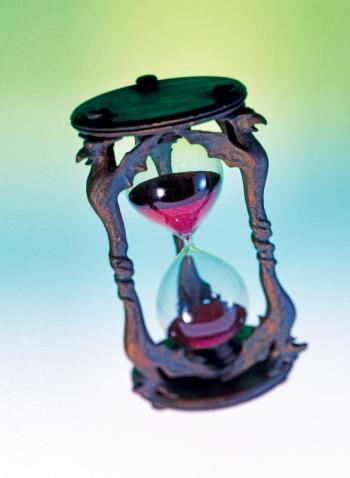 Hourglass prop from MGM’s Oz, 20 inches tall. Courtesy of "The Wonderful World of Oz: An Illustrated History of the American Classic" by John Fricke (Down East Books).
Hourglass prop from MGM’s Oz, 20 inches tall. Courtesy of "The Wonderful World of Oz: An Illustrated History of the American Classic" by John Fricke (Down East Books).
 A Gilbert Adrian-designed dress tested by Judy Garland for "The Wizard of Oz" (1939) and the blouse she wore during the first two weeks of filming, together with a shooting script used by Bobby Connolly, who staged the dance numbers. Courtesy of "The Wonderful World of Oz: An Illustrated History of the American Classic" by John Fricke (Down East Books).
A Gilbert Adrian-designed dress tested by Judy Garland for "The Wizard of Oz" (1939) and the blouse she wore during the first two weeks of filming, together with a shooting script used by Bobby Connolly, who staged the dance numbers. Courtesy of "The Wonderful World of Oz: An Illustrated History of the American Classic" by John Fricke (Down East Books).
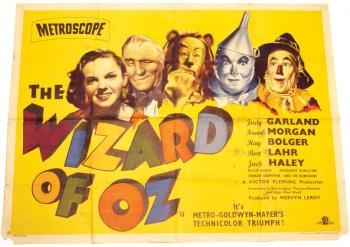 Poster for British reissue of “The Wizard of Oz,” 1955. Courtesy of "The Wonderful World of Oz: An Illustrated History of the American Classic" by John Fricke (Down East Books)
Poster for British reissue of “The Wizard of Oz,” 1955. Courtesy of "The Wonderful World of Oz: An Illustrated History of the American Classic" by John Fricke (Down East Books)
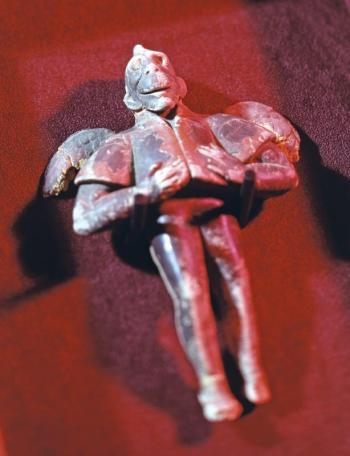 Rubber flying monkey miniature, displayed in box, made in- house at MGM. Courtesy of "The Wonderful World of Oz: An Illustrated History of the American Classic" by John Fricke (Down East Books).
Rubber flying monkey miniature, displayed in box, made in- house at MGM. Courtesy of "The Wonderful World of Oz: An Illustrated History of the American Classic" by John Fricke (Down East Books).
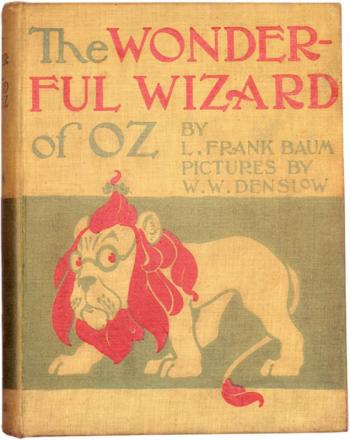 The Wonderful Wizard of Oz, by L. Frank Baum, Illustrated by W. W. Denslow, Chicago, New York: George M. Hill Co., 1900, 1st ed. 8 by 10 inches. Courtesy of "The Wonderful World of Oz: An Illustrated History of the American Classic" by John Fricke (Down East Books).
The Wonderful Wizard of Oz, by L. Frank Baum, Illustrated by W. W. Denslow, Chicago, New York: George M. Hill Co., 1900, 1st ed. 8 by 10 inches. Courtesy of "The Wonderful World of Oz: An Illustrated History of the American Classic" by John Fricke (Down East Books).
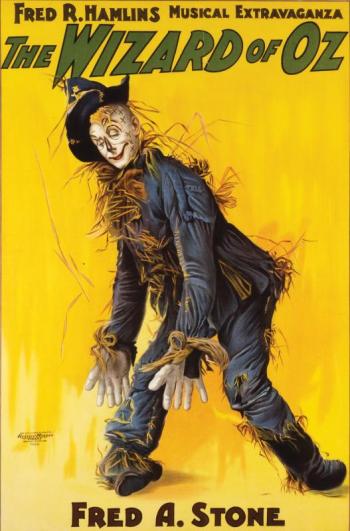 U.S Lithograph Co. Poster, 1902, Lithograph, 30 by 34 inches. Courtesy of "The Wonderful World of Oz: An Illustrated History of the American Classic" by John Fricke (Down East Books).
U.S Lithograph Co. Poster, 1902, Lithograph, 30 by 34 inches. Courtesy of "The Wonderful World of Oz: An Illustrated History of the American Classic" by John Fricke (Down East Books).
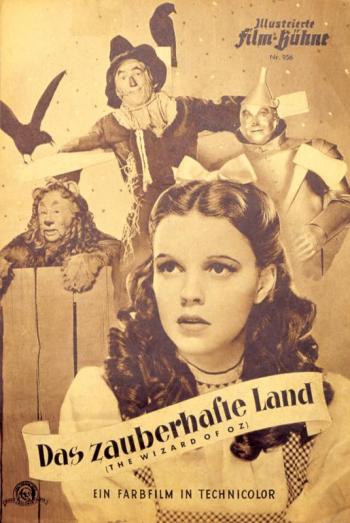 Cover of an illustrated program for Austrian release of Oz, 1940, 7 by 10 inches. Courtesy of "The Wonderful World of Oz: An Illustrated History of the American Classic" by John Fricke (Down East Books)
Cover of an illustrated program for Austrian release of Oz, 1940, 7 by 10 inches. Courtesy of "The Wonderful World of Oz: An Illustrated History of the American Classic" by John Fricke (Down East Books)
Click your heels three times and say, “There's no place like Oz, there's no place like Oz, there's no place like Oz.”
Now, walk in the front door of the Farnsworth Art Museum in Rockland, and head for “The Wonderful World of Oz: Selections from the Willard Carroll and Tom Wilhite Collection,” and you'll know it's true.
Since Columbus Day weekend, those to whom the 1939 film was dedicated, the “young at heart,” have experienced selections from this massive collection much as Dorothy experienced Munchkinland — in enchanted awe.
Carroll, who began collecting Oz memorabilia as a child, has amassed 100,000 items related to Frank L. Baum's magical land.
“I really like opening up the collection to the public,” Carroll said. “A lot of people know about the movie, but not the books, the silent films, or the 1902 stage version ... I've given a few tours of the exhibit and loved seeing the reaction of the people. When they see Dorothy's dress and the Munchkin costume, they just stop in their tracks.
“Whether you like it, love it, or hate it, Oz is a great equalizer; everyone has some sort of memory or a story about it.”
Ham Meserve, son of Margaret Hamilton (the Wicked Witch from the 1939 film), resides on Southport Island and owns the house his mother lived in on Cape Island. Meserve was a tow-headed child of three when the film was being made. He remembers running around on the set during a rehearsal once. He has been to the exhibit in Rockland three times.
"What's spectacular about the exhibit is the way it gets across how much "The Wizard" has impacted American pop culture," Meserve said. "That's what's brilliant — showing the 100 years of Oz from the books, silent films, stage shows, the "Wizard" movie and then "The Wiz" (1978) and "Wicked ..." The movie comes in near the end, but it as played a key role in pop culture."
Carroll's childhood love of everything Oz has grown sizeably over the decades. From a “Wizard of Oz coloring book” to his first first edition volume (bought at age 15 for $150), to the wicked mother of all memorabilia: the hourglass.
“I always wanted the hourglass. I remember as a kid wondering what happened to it after the movie,” Carroll said.
And then, several years ago it came up for auction. Carroll was there — and so was a bidder for Michael Jackson. Fortunately for Carroll, who recalls the event as his “best and worst” auction experience, Jackson's representative was unable to continue bidding and Carroll got it.
“I could never have outbid Michael Jackson," Carroll said, laughing. "I couldn't believe what I paid for it. After that, I sent someone to bid for me. I decided it wasn't a good idea to have me let loose at an auction!”
He didn't get to touch or hold the unforgettable, intimidating, OK, downright scary timepiece until it was delivered to the Carroll/Wilhite home in California.
What was that like?
“It was pretty great,” Carroll said. “It was delivered in an enormous box. What was surprising was how light it was; it's a pretty fragile item made mostly of paper maiche and balsa wood. The globes are where the weight is.
“I had what I called my “earthquake proof" box made to store it in. But I'd take it out for special occasions. A couple of people who visited us asked to hold it and their hands were almost shaking, it's such an iconic item.”
Also in Carroll’s “most prized” category are a series of the wallpaper panels of the 1902 stage production that were designed by the first illustrator of Baum's books, W. W. Denslow.
The future Oz Museum
In the not too distant future, these items, among the largest private collection of Oz memorabilia in the world, will be displayed in “The National Oz Museum, Center for Illustration and Literature for Young People,” in Camden.
In 2012, as part of the Rhode Island School of Design's (RISD) design studio, 12 graduate students completed their vision of what the interior of the museum would look like in the 5,000 square foot workshop on Carroll and Wilhite's property. The students visited the site prior to beginning their conceptual drawings.
“We just let them wander, as opposed to leading them through the building,” Carroll said.
Once he and Wilhite narrowed the 12 students down to two, they had input on the designs.
“The one we chose had a nice facade. Inside, it reflected the open, welcoming feeling we were looking for; we didn't want the museum to feel like attraction,” Carroll said.
The Oz museum will contain a permanent exhibit of 150 to 175 items, including the 105 items now at the Farnsworth. Carroll plans to rotate other exhibits, perhaps his 1902 stage show photos and posters, the movie blueprint, and another of his collection of foreign Oz books in 50 languages.
“It's great to see how different illustrators interpret the characters. A Russian author wrote four novels, sequels of the last Baum book, that were very popular in eastern Europe,” Carroll said. “These books add a worldwide reach to the museum.”
A library-like environment will be created for the book display (including the three Carroll authored). Although the volumes can't actually be handled, they can be scanned and then viewed on iPads.
Carroll, like the rest of us, can't wait for it to be completed. He said they hope to start pricing out construction costs in the next few years.
Oz's role in Carroll's life extends beyond the collection and future museum plans. In 2011 he began working with Bay Chamber Concerts to develop and stage his original children's opera based on his favorite Oz book, “The Road to Oz.”
“It's a 75-minute opera with sets designed like a big pop-up book by children's book author Bob Staake," Carrol said. "The idea is to tour the opera, which is designed to be performed by local children's choirs in the towns the show goes to.”
To Oz? To Oz! “We're off to see the collection, the wonderful collection of Oz!”
Adult tickets to the Farnsworth exhibit are $12, $10/seniors and students (17 and up), $0/for 16 years and younger. The collection will be displayed until March 30, so call your flying monkey, grab your broom, or follow an imaginary yellow brick road to 16 Museum Street.
For more information, visit farnsworthmuseum.org.
See a photo gallery of some of the items from the Carroll-Wilhite collection on www.boothbayregister.com, thanks to David Troupe at the museum.
Event Date
Address
United States




























